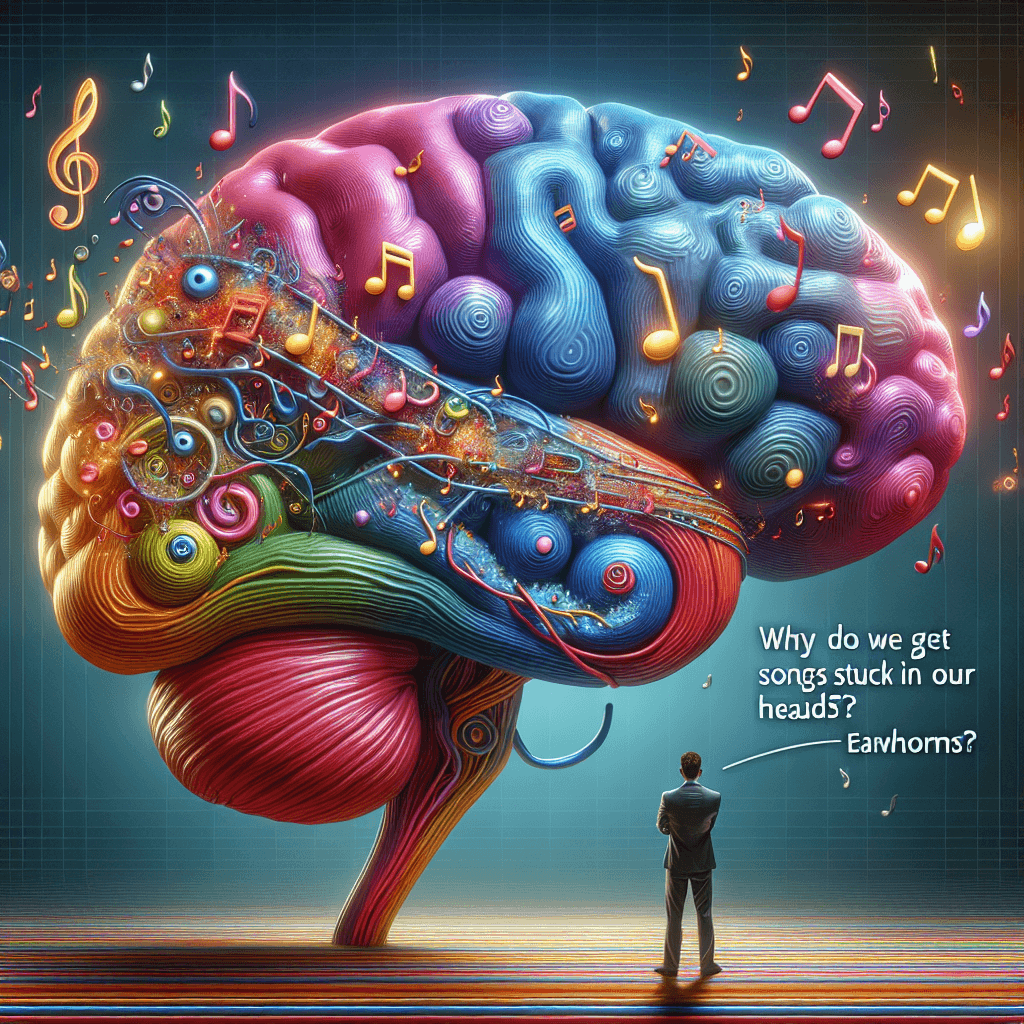Brain Radio: Unpacking Why We Get Songs Stuck in Our Heads (Earworms)
Ever had a catchy tune burrow into your brain and play on an endless loop? We unpack the science behind this common, sometimes maddening phenomenon known as an earworm.


Too Long; Didn't Read
A song stuck in your head is called an 'earworm,' or Involuntary Musical Imagery (INMI). This post explores the science behind why it happens.
Blog Post Title: Brain Radio: Unpacking Why We Get Songs Stuck in Our Heads (Earworms)
Introduction
Ever had a tune burrow into your brain, playing on an endless loop for hours, maybe even days? That catchy chorus you heard on the radio this morning, or the jingle from an old advert – suddenly, it's the only thing you can hear in your mental quiet space. This common, sometimes maddening phenomenon has a name: an earworm, or more scientifically, Involuntary Musical Imagery (INMI). While often trivial, these persistent tunes offer a fascinating glimpse into how our brains process music, memory, and even incomplete thoughts. This post delves into the science behind why we get songs stuck in our heads, exploring the cognitive mechanisms and musical characteristics that turn a simple melody into a relentless earworm.
What Exactly is an Earworm?
An earworm, or INMI, refers to the spontaneous recall and repetition of a piece of music within one's mind. It’s not deliberate humming or singing; it's the brain seemingly playing music on its own accord. Research suggests the vast majority of people experience earworms, often weekly or even daily. Typically, it’s not the entire song that gets stuck, but rather a short, memorable segment – usually 15 to 30 seconds long, often the chorus or a catchy hook. While the term "earworm" might sound parasitic, the experience is generally neutral or mildly annoying, though occasionally enjoyable or deeply irritating depending on the song and the situation.
The Brain's Role: A Cognitive Glitch?
Why does our brain latch onto these musical fragments? Several cognitive factors seem to be at play:
- Auditory Cortex Activation: Neuroimaging studies indicate that experiencing an earworm activates the auditory cortex, the part of the brain that processes sound, even when no music is actually playing. It's like the brain is "hearing" the music internally.
- Memory Association: Songs are powerful memory triggers. Hearing a tune can reactivate associated memories and emotions, and conversely, certain thoughts or moods might trigger a specific song, potentially setting off an earworm loop.
- The "Cognitive Itch": Research, including work from institutions like Goldsmiths, University of London, suggests earworms might be a form of "cognitive itch." The brain detects a pattern in the music (like a catchy, repetitive melody) but perhaps perceives it as incomplete. Like an unresolved musical phrase, the brain tries to "scratch the itch" by repeating the fragment, attempting to fill in the gaps or reach a conclusion that never quite arrives. This ties into the Zeigarnik effect – the psychological tendency to remember unfinished tasks better than completed ones. An earworm could be the brain's attempt to "complete" the musical task.
- Mental State: Earworms often strike when the brain is in a low-attentional state – during routine activities like showering, commuting, or when bored or tired. Stress or conversely, a relaxed, wandering mind, can also make us more susceptible.
What Makes a Song "Sticky"?
Not all songs become earworms. Studies analyzing the musical properties of common earworms have identified several recurring features:
- Simplicity and Repetition: Songs with simple, conventional melodic structures and significant repetition are prime candidates. Think nursery rhymes or pop choruses. Repetition makes the pattern easy for the brain to grasp and loop.
- Catchiness Factors: Faster tempos and common melodic shapes (like the rise and fall often heard in children's songs) are frequent characteristics.
- Unique Twists: Paradoxically, alongside simplicity, earworms often contain something slightly unexpected – an unusual interval jump, faster notes, or rhythmic syncopation – that grabs attention within an otherwise predictable structure. Research by music psychologists like Dr. Kelly Jakubowski highlights this blend of conventionality and surprise.
- Exposure: Recent or repeated exposure to a song significantly increases its chances of becoming an earworm. If you've heard it multiple times, it's primed in your memory.
Banishing the Brain Radio
While most earworms fade on their own, some linger annoyingly. What can you do?
- Engage with the Song: Listen to the earworm song all the way through. This might help "complete" the loop in your brain. Singing it aloud might also work.
- Distraction: Engage your brain in something else. Listen to different music, talk to someone, or tackle a moderately challenging cognitive task like solving anagrams or reading an engaging article.
- Chew Gum: Some research suggests chewing gum might interfere with the subvocalization – the silent "singing" in your head – associated with earworms, potentially disrupting the loop.
Conclusion
Getting a song stuck in your head is a near-universal human experience, rooted in the intricate interplay between music, memory, and our brain's pattern-seeking tendencies. These "earworms" arise from how our auditory cortex processes sound, how memory networks are triggered, and potentially from the brain's attempt to resolve incomplete musical patterns – a sort of cognitive itch. While the simplicity, repetition, and occasional unique flair of a song make it more likely to stick, factors like recent exposure and our own mental state also play crucial roles. Though sometimes a nuisance, earworms are ultimately a harmless, fascinating testament to our brain's deep connection with music and its relentless internal soundtrack.


